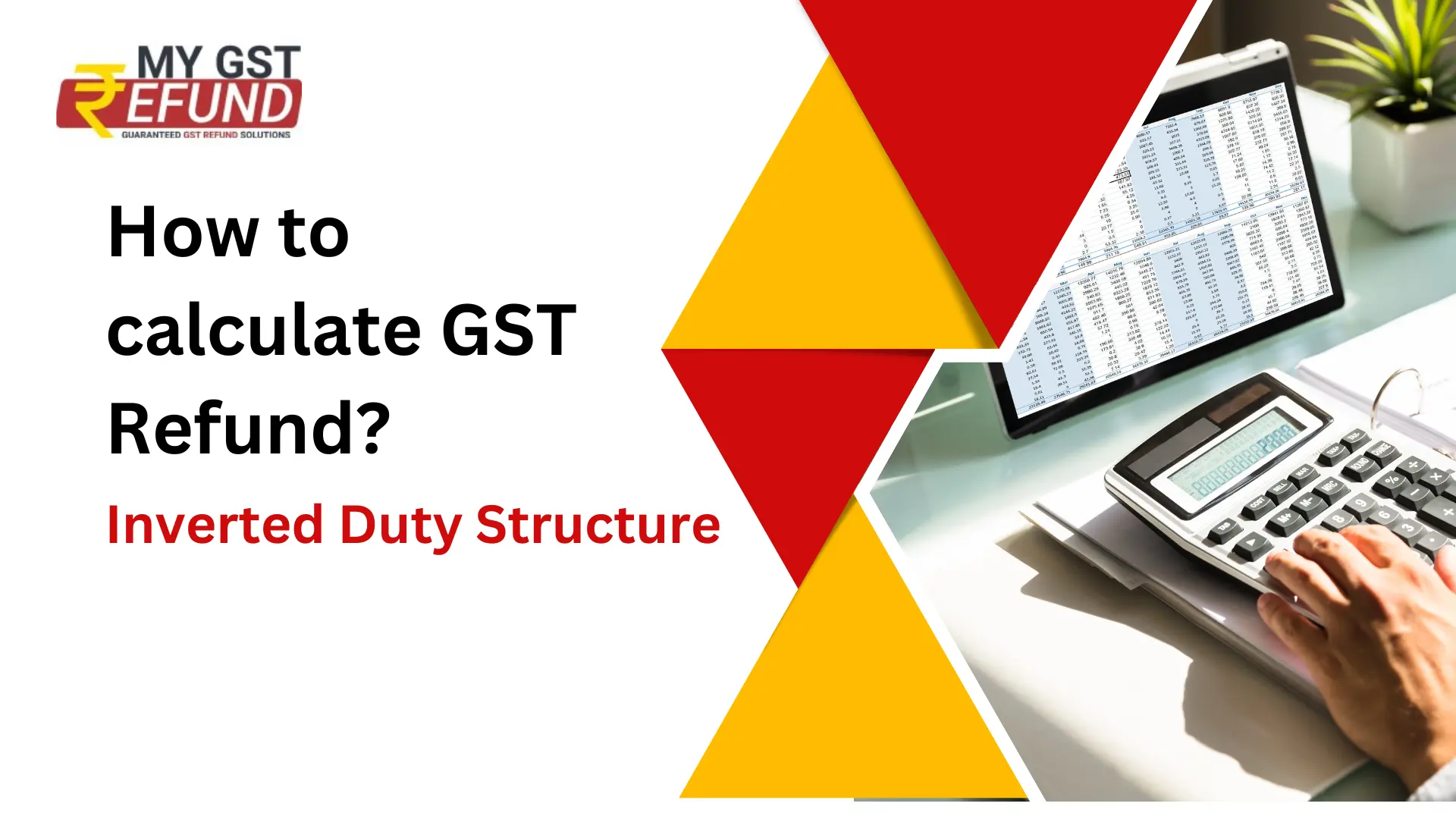How to Calculate GST Refund in Inverted Duty
Published on: Mon Oct 30 2023
What is Inverted Duty:
The term ‘Inverted Duty or Inverted Tax Structure’ refers where the tax rate on input purchased supplies is more than the tax rate on outward supplies.
For example:- if a trader purchases raw materials (goods) at the rate of 12% and then from the raw materials he makes some clothes and sells them to the domestic customers at the rate of 5%. So here the purchasing goods at the rate of 12% is the ‘Input Purchase’ and selling to domestic customers at the rate of 5% is the ‘Outward Supplies’. The input purchase rate is higher than the outward supplies rate so it is an ‘Inverted Duty’.
In inverted duty, refunds are only granted on input tax credit (ITC).
To take a GST refund a taxpayer needs to submit all the relevant documents and declaration if required, to the GST authorities for claiming the GST refund. Refund under GST are:- (i) Export of Goods and Services (ii) the cash balance in the Electronic Cash Ledger (iii) Inverted duty refund
As per section 54(3) of CGST Act, 2017- refund of unutilized input tax credit shall be allowed in cases:-
Zero rated supplies made without payment of tax
Where the credit has accumulated on account of rate of tax on inputs being higher than the rate of tax on output supplies (other than nil rated or fully exempt supplies), except supplies of goods or services or both as may be notified by the Government on the recommendations of the council.
Procedure for Filling the Inverted Duty Refund
A taxpayer claiming a refund must apply in Form GSTR-1 and GSTR- 3B with all the relevant details within the tax period, and whereas the refund of cash paid in excess of the electronic cash ledger then apply in From RFD- 01. It should be filed online in the GSTN portal. Rule 89 specified everything about the document of refund filling. As per section 54(1) Form RFD- 01 has to be filled within 2 years from the end of the financial year in which the refund for such claim arises.
As per Rule 89(5) of CGST act, 2017 refund of ITC shall be granted for such inverted duty and its formula is also given in this rule.
As per the formula of Rule 89(5), Maximum refund amount=
Here,
- Net ITC means, Input tax credit availed on input and input services during the relevant period, other than the input tax credit availed for which refund is claimed under sub-rules (4A) or (4B) or both.
- Adjusted Total Turnover means, sum of Domestic turnover of goods, export of services, domestic services and excludes Domestic supplies, export supplies and Inverted turnover.
- Turnover of Inverted rate supply of goods and services, it means aggregate value of the inverted rated supply of goods and services made during the relevant period.
Or the value of all supplies made including exports and interstate supplies, but excluding the inward supplies of goods and services that attract a higher rate of tax than the outward supplies.
The formula determines the highest possible refund amount. Depending on the real amount of unused ITC that the taxpayer had during the applicable period, the actual return amount might be lower than the maximum amount.
Refund claims are subject to a number of requirements and limitations, including filing applications for refunds within the allotted time frame and including all required supporting documentation with the application. The procedure to claim refund may differ for various taxpayer groups such as manufacturers and exporters. It is important to follow the applicable method and procedure as prescribed by the GST law.
Legal Provision under CGST act, 2017
Sec 54(4): Documents required to be accompanied
Sec 54(5): Order for Refund and credited to the Fund referred to in section 57
Sec 54(7): Order for Refund as per section
Sec 54(5): within 60 days from the date of receipt of application
Sec 54(8)(b): Refundable amount shall be paid to the applicant
Sec 54(10): Withholding the refund in certain cases
Rule 89(1): Refund application Form and FORM GST RFD-01
Rule 89(2): Documents to be attached with application
Rule 89(3): Electronic credit ledger shall be debited by the applicant by an amount equal to refund claimed
Rule 89(4) and 89(5): Refund Calculation
Rule 90(2): Acknowledgement in FORM GST RFD-02 within 15 days of filing the complete application
Rule 90(3): Deficiencies if any will be communicated in FORM GST RFD-03
Rule 92 (1): Officer shall pass an order in FORM GST RFD-06 within 60 days of receipt of the complete application
Forms Used in Inverted Duty Refund
FORM GST RFD-02: Acknowledgment for filing of refund claim
FORM GST RFD-03: Deficiency memo in the claim of refund
FORM GST RFD-04: Provisional sanction of refund
FORM GST RFD-05: Payment order of refund
FORM GST RFD-06: Final refund sanction order
FORM GST RFD-07: Refund withhold order
FORM GST RFD-08: Show cause notice on refund
FORM GST RFD-09: Reply to the SCN on refund
FORM GST RFD-01W: Withdrawal of refund application
FORM GST PMT-03: Order re-crediting the refund to the electronic credit ledger
To Calculate your GST Refund - Click here
Related Posts




